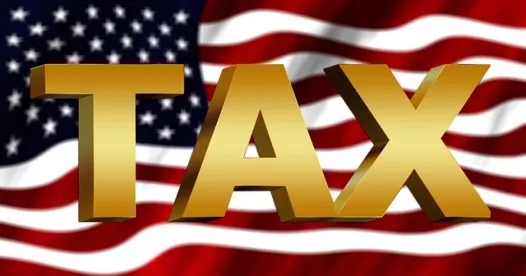Two cases decided in January—one by the Sixth Circuit and another by the District Court for the District of Columbia—offer a cautionary tale to plan sponsors who rely on a statute or regulation that allows retroactive amendments to tax-qualified plans. Both cases involved a change to the interest and mortality assumptions that pension plans use to calculate the minimum amount of a lump sum distribution. The change was expressly authorized by a statute, but the Pension Benefit Guaranty Corporation said “not so fast”—leaving the plan sponsors responsible for several million dollars in additional liabilities.
The cases offer a cautionary tale for plan sponsors: practices that are permitted in one context will not necessarily be accepted in other contexts. For this reason, it is important to conduct a thorough analysis before relying on agency guidance or accepted practice.
Background. Section 302 of the Pension Protection Act of 2006 (“PPA”) changed the interest and mortality assumptions that must be used to calculate the minimum amount of a lump sum distribution from a defined benefit pension plan. The changes went into effect in 2008.
As is generally the case, plan sponsors wishing to apply this change had to amend their plans. Section 1107 of the PPA established a December 31, 2009, deadline for adopting the amendments. Section 1107 indicated that an amendment adopted by this deadline could be made effective retroactively to 2008, if the plan was operated as if the amendment had been in effect. Section 1107 expressly provided relief from ERISA’s anti-cutback rule for any reductions in participants’ lump sums caused by the amendment. (The effective dates and deadlines were slightly different for plans with non-calendar plan years.)
Like many plan sponsors, Kentucky Bancshares and Royal Oak Enterprises began using the new PPA assumptions when the statute became effective, but waited until later to adopt the required plan amendments—relying on Section 1107 of the PPA to do so. Each sponsor terminated its plan during the interim period in a standard (i.e., voluntary, non-distress) termination. The termination date was after the new assumptions went into effect and before the deadline for adopting the required plan amendments. Although both sponsors presumably could have adopted the plan amendments before their plans were terminated, both waited until closer to the PPA deadline. The retroactive amendments were covered by a favorable determination letter from the IRS.
PBGC says “not so fast.” After the plans were terminated and benefits were distributed, the PBGC conducted post-termination audits (which are becoming increasingly common). In both cases, the PBGC rejected the amendments and required the plan sponsors to pay additional benefits, based on the pre-PPA plan terms. The PBGC’s determinations were based on a PBGC regulation that requires plan benefits to be “determined under the plan’s provisions in effect on the plan’s termination date.” The PBGC asserted that the plan provisions in effect on the termination date were the pre-PPA provisions—even though the plans had been administered in accordance with the PPA change (as if the change were in effect) and the retroactive plan amendments were expressly authorized by statute and approved by the IRS.
Courts deferred to PBGC. Both courts considered the plans’ arguments that the PPA assumptions applied, but they deferred to the PBGC. The courts concluded that Section 1107 of the PPA provided relief under ERISA’s anti-cutback rule, but did not supersede the PBGC’s regulation.
Both courts applied an “arbitrary and capricious” standard of review, deferring to the PBGC even though the plans had made strong arguments. Under this standard of review, the courts did not necessarily agree that the PBGC’s position was the best interpretation of the statute; they merely determined that the PBGC’s position was a permissible interpretation of the statute and therefore entitled to deference from the court. The issue could have been avoided if the PBGC had accepted the PPA’s authorization for a retroactive amendment, but the PBGC had sole discretion to interpret its regulation. (Query whether the PBGC might come to regret its position. Although the liability in this case fell on the plan sponsor, the same would not be true in a distress termination: in that case, any added liability would fall on the PBGC.)
Lesson learned. These cases offer a cautionary tale about the tangled thicket plan sponsors must navigate under ERISA. In this case, a statute offered relief from one provision of ERISA (the anti-cutback rule), but the relief was found not to extend to another provision of ERISA (the plan termination rules interpreted by the PBGC). The PBGC was not required to accede to the plan sponsors’ good faith belief that the authority to adopt PPA amendments retroactively would apply in the plan termination context.
An analogous lesson applies to ongoing plans. The IRS often interprets the tax provisions of ERISA or grants relief in a way that does not bind courts reviewing claims brought by participants (or the Labor Department) under virtually identical non-tax provisions of ERISA. The IRS’s determination letter and employee plan correction (“EPCRS”) programs are two examples. In both instances, the IRS tells plan sponsors that if they take certain steps their plans will remain tax-qualified. But the IRS’s determinations are not binding on courts interpreting virtually identical statutory provisions under Title I of ERISA. In many cases, courts have found liability under Title I of ERISA even though the practice in question had previously been approved by the IRS. For this reason, it is important to conduct a thorough analysis of plan provisions and proposed corrections and plan changes before relying on an IRS determination.



 />i
/>i
